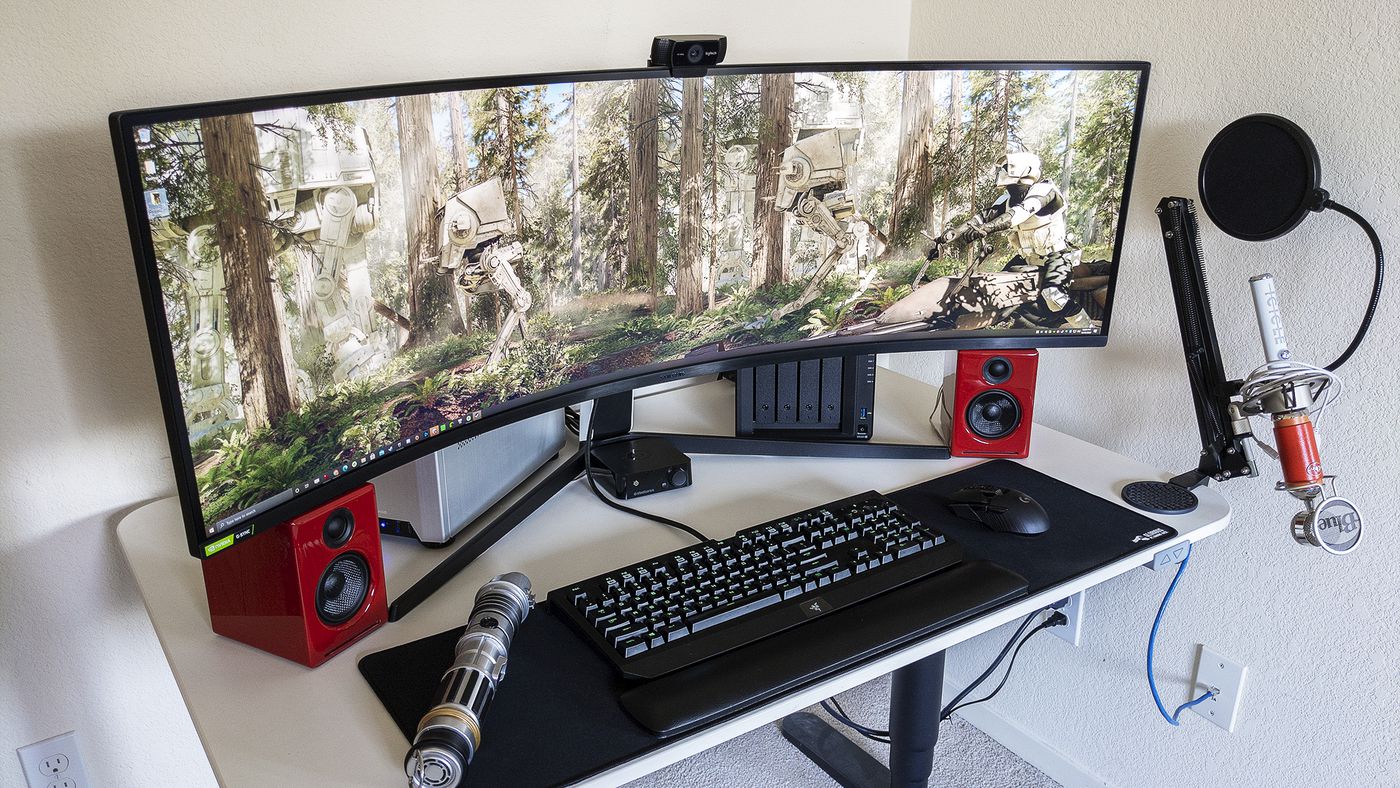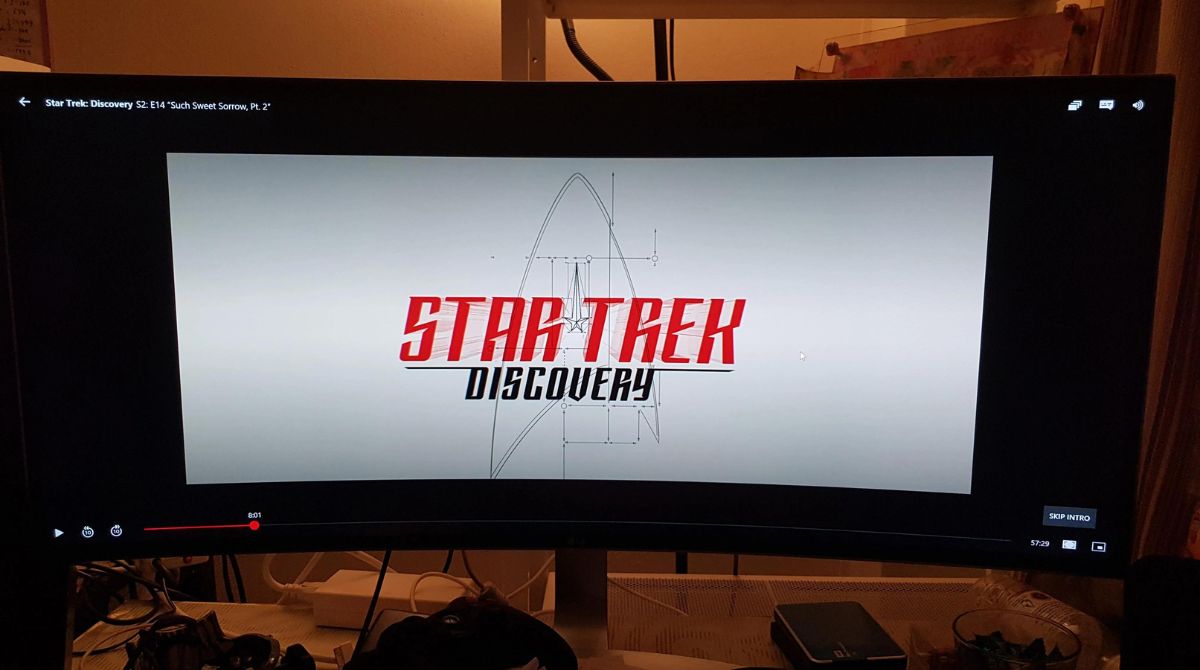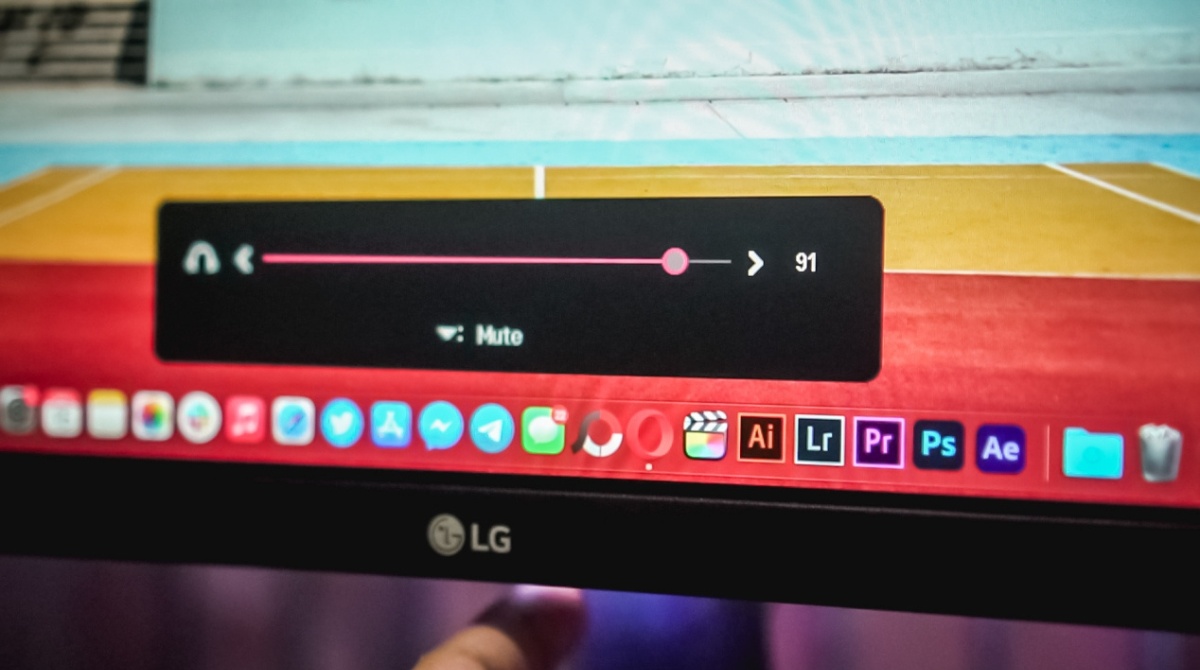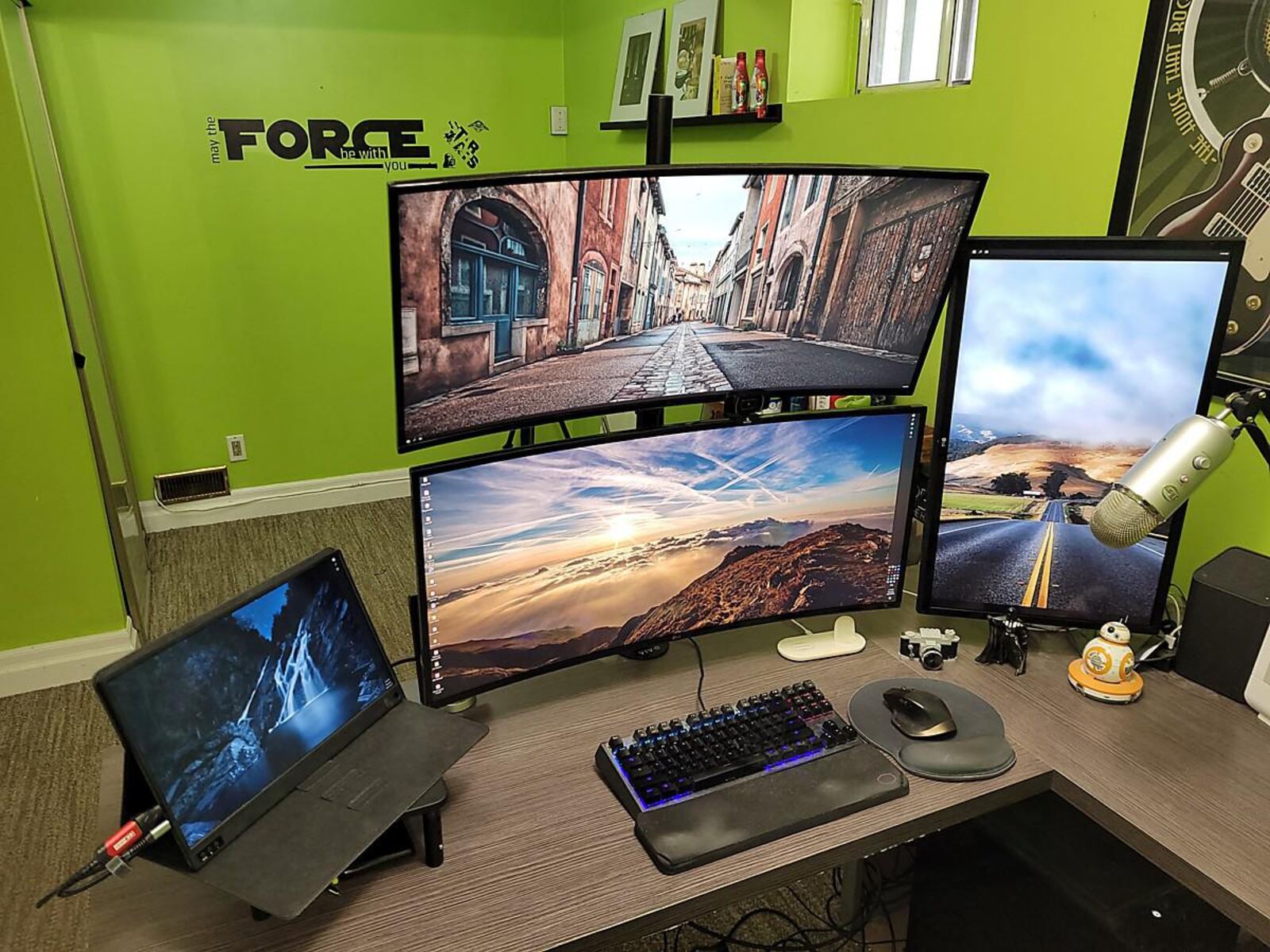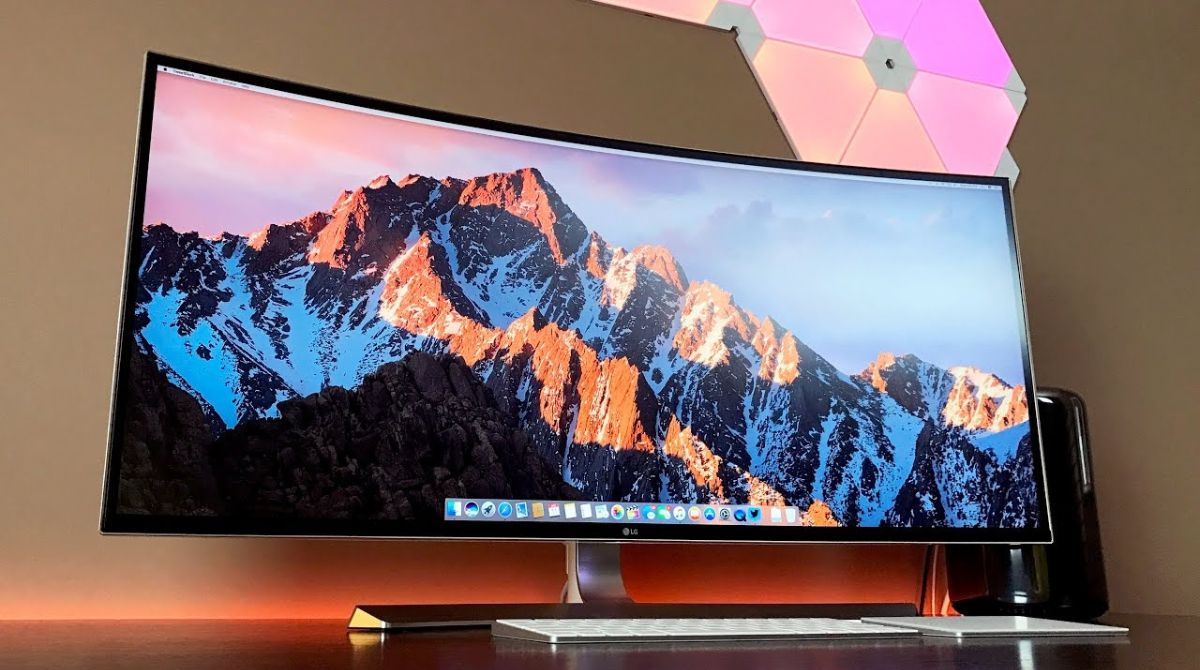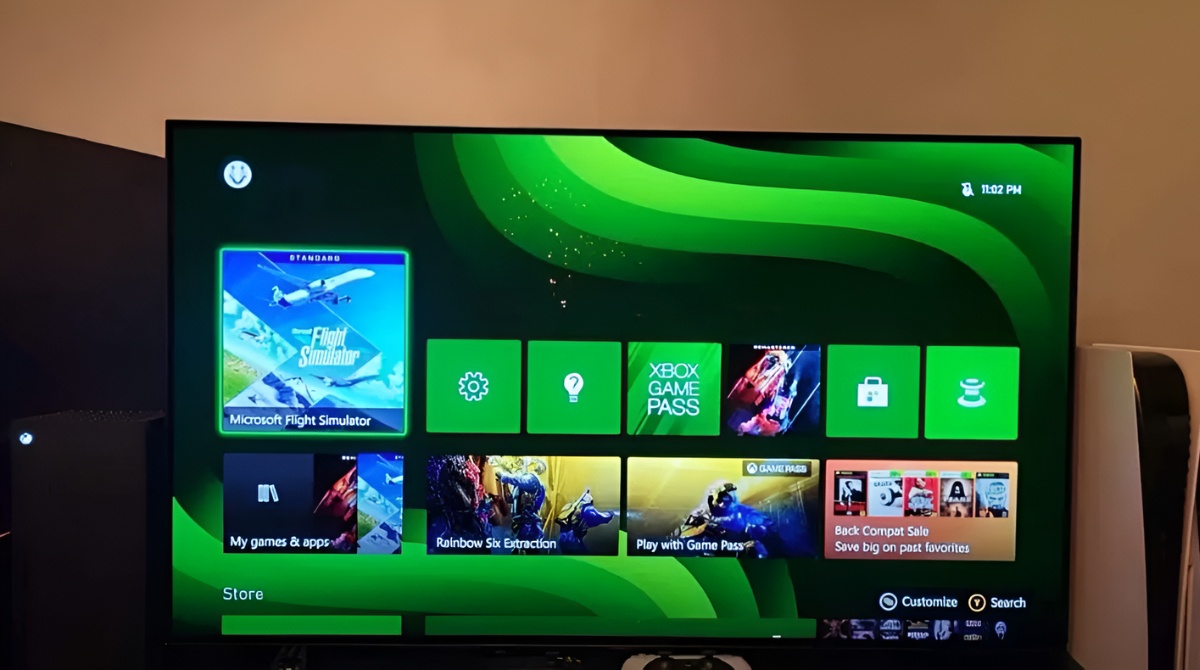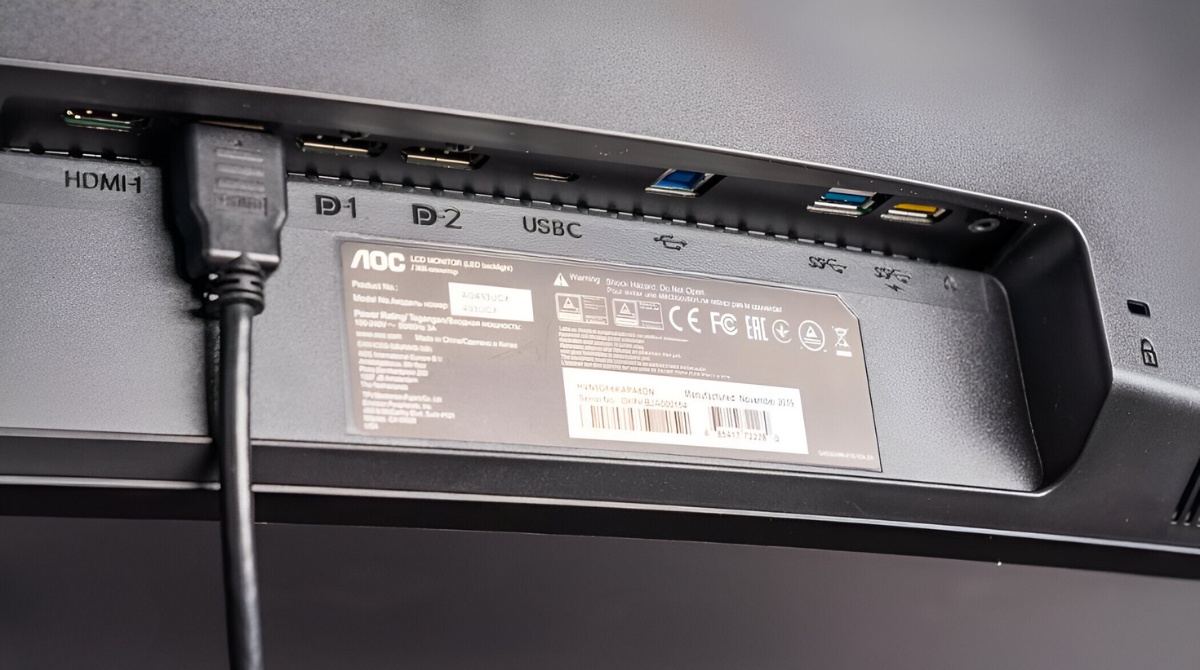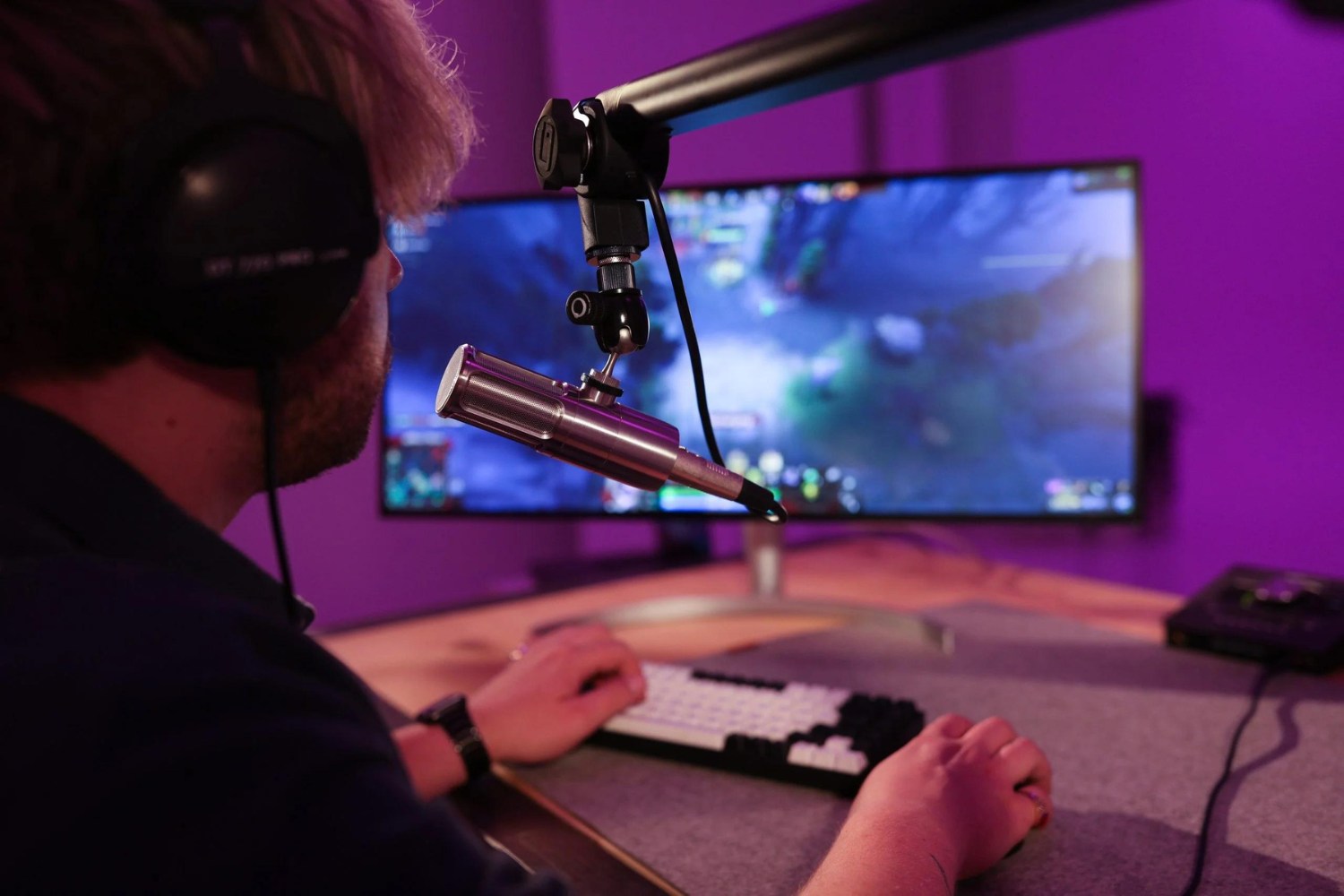Introduction
Welcome to the world of ultrawide monitors – immersive displays that widen your field of view and enhance your multimedia experience. With their extra-wide aspect ratio, ultrawide monitors offer a more cinematic and immersive viewing experience compared to traditional monitors. However, if you’re wondering why you can’t hear audio through your ultrawide monitor, you’re not alone. This article will guide you through the steps to troubleshoot and resolve audio issues on your ultrawide monitor.
Ultrawide monitors are becoming increasingly popular for gaming, multimedia editing, and productivity tasks. Their wider screen real estate allows for better multitasking and increased productivity. Whether you’re watching movies, playing video games, or listening to music, having audio play through your ultrawide monitor is essential for a complete multimedia experience.
However, there can be various factors that prevent you from hearing audio through your ultrawide monitor. It could be an issue with your computer’s audio settings, your ultrawide monitor’s audio configuration, or even the type of cable connection you are using. Fortunately, there are several steps you can take to troubleshoot and resolve these issues.
In this article, we will explore the common reasons why you might not be hearing audio through your ultrawide monitor and provide step-by-step instructions for checking and adjusting audio settings on your computer and monitor. Additionally, we will discuss how to configure audio when using HDMI, DisplayPort, or USB-C connections on your ultrawide monitor.
So, if you’re ready to unlock the full multimedia potential of your ultrawide monitor, let’s dive in and troubleshoot the audio issues together.
What is an Ultrawide Monitor?
An ultrawide monitor is a type of display that offers a wider aspect ratio compared to traditional monitors. While standard monitors typically have a 16:9 aspect ratio, ultrawide monitors have an aspect ratio of 21:9 or even wider. This means that the width of the screen is significantly wider, offering a more expansive viewing experience.
Ultrawide monitors come in various sizes, ranging from 29 inches to a whopping 49 inches diagonally. They offer more horizontal space compared to traditional monitors, allowing you to see more content side by side without the need for multiple displays or windows.
One of the key benefits of an ultrawide monitor is the immersive experience it provides. Whether you’re watching movies, playing games, or working on creative projects, the wider screen allows for a more cinematic feel and enhanced productivity.
These monitors are particularly popular among gamers, as the wider field of view can provide a competitive advantage by allowing you to see more of the game environment without having to pan or scroll. Additionally, many ultrawide monitors come with high resolutions, such as Quad HD (2560 x 1440) or Ultra HD (3840 x 2160), which deliver sharp and detailed visuals.
In addition to gaming, ultrawide monitors are favored by professionals in fields such as graphic design, video editing, and programming. The wide screen real estate allows for better multitasking, with the ability to have multiple windows or applications open simultaneously. This can significantly enhance productivity by reducing the need to constantly switch between screens or tabs.
While ultrawide monitors offer exciting possibilities, it’s important to note that some content, particularly older movies and games, may not be optimized for wider aspect ratios. In such cases, you may notice black bars on the sides of the screen. However, many modern applications and media are designed to take advantage of the wider aspect ratio, providing a truly immersive experience.
In summary, ultrawide monitors provide a wider viewing experience, offering more screen real estate for multitasking, enhanced gaming, and improved productivity. With their immersive visuals and increased horizontal space, these monitors have become increasingly popular for both entertainment and professional use.
Why Can’t I Hear Audio through My Ultrawide Monitor?
If you’re unable to hear audio through your ultrawide monitor, there can be several reasons behind this issue. Let’s explore some of the common factors that may be causing the audio problem:
1. Incorrect audio settings on your computer: One possible reason for the lack of audio is that your computer’s audio settings are not configured correctly. It’s possible that the audio output is set to a different device, such as the built-in speakers or headphones, rather than your ultrawide monitor. Checking and adjusting the audio settings on your computer can help resolve this issue.
2. Ultrawide monitor audio configuration: Another possible cause of audio issues is the audio configuration of your ultrawide monitor itself. Some monitors have built-in speakers that need to be enabled or configured properly to play audio. Additionally, there may be specific audio settings or volume controls on your monitor that need to be adjusted.
3. Incorrect cable connection: The type of cable connection you are using between your computer and ultrawide monitor can also impact the audio output. If you’re using an HDMI, DisplayPort, or USB-C cable, ensure that it’s securely connected and that both your computer and monitor are set to use the same audio input/output source.
4. Audio driver issues: Outdated or faulty audio drivers on your computer can also prevent audio from playing through your ultrawide monitor. Updating the audio drivers or reinstalling them can often resolve this issue.
5. Compatibility issues: In some cases, compatibility issues can arise between your computer’s audio hardware and the ultrawide monitor. This can be due to differences in audio codecs, drivers, or firmware. Troubleshooting and ensuring that your computer and monitor are compatible with each other can help resolve this issue.
6. External audio devices: If you have external audio devices, such as speakers or headphones, connected to your computer, these may take priority over the audio output to the ultrawide monitor. Check the audio settings and make sure that the correct audio output device is selected.
By understanding these potential reasons for the audio problem, you can now proceed to the next sections where we will guide you through the steps to check and adjust audio settings on your computer and ultrawide monitor. These troubleshooting steps will help you determine the cause of the issue and find the appropriate solution to enable audio playback through your ultrawide monitor.
Checking Audio Settings on Your Computer
When experiencing audio issues with your ultrawide monitor, it’s essential to start by checking the audio settings on your computer. Follow these steps to ensure that the audio output is correctly configured:
- Open the Sound settings: On Windows, right-click on the speaker icon located in the taskbar and select “Open Sound settings.” On macOS, click the Apple menu, go to “System Preferences,” and click “Sound.”
- Verify the correct audio output device: In the Sound settings, ensure that the correct playback device is selected. Look for your ultrawide monitor in the list of available audio devices. If it’s not listed or if a different device is selected, choose your ultrawide monitor as the default audio output.
- Adjust the volume levels: Check the volume levels and ensure that they are set appropriately. Increase the volume if it’s too low or unmute the audio if it’s muted. Also, check the volume controls on the ultrawide monitor itself, as some models have separate volume adjustments.
- Test the audio output: Use the “Test” or “Test Sound” option in the Sound settings to check if audio is playing through your ultrawide monitor. This can help determine if the issue lies with the audio settings or if there are other factors at play.
- Update audio drivers: Outdated or faulty audio drivers can cause audio problems. Check for the latest audio drivers for your computer’s sound card or audio chipset. Visit the manufacturer’s website or use a driver update utility to ensure that you have the most up-to-date drivers installed.
Once you have checked and adjusted the audio settings on your computer, test the audio output through your ultrawide monitor again. If the issue persists, proceed to the next section where we will explore how to adjust the audio settings on your ultrawide monitor itself.
Adjusting Audio Settings on Your Ultrawide Monitor
If you’ve confirmed that the audio settings on your computer are correctly configured and you’re still unable to hear audio through your ultrawide monitor, it’s time to adjust the audio settings on the monitor itself. Follow these steps to ensure that the audio is enabled and set up properly:
- Access the monitor’s menu: Most ultrawide monitors have an on-screen display (OSD) menu that allows you to access various settings. Look for the menu button(s) on your monitor, which is typically located on the front or bottom bezel.
- Navigate to the audio settings: Use the button(s) to navigate through the OSD menu and locate the audio settings section. This may be labeled as “Audio,” “Sound,” or something similar.
- Enable the audio output: In the audio settings, ensure that the audio output option is enabled. Some monitors have a built-in speaker option that needs to be turned on. If there are multiple audio output options available, select the one corresponding to the connection you are using (e.g., HDMI, DisplayPort).
- Adjust the volume: If your monitor has volume controls, make sure that the volume level is set appropriately. Increase the volume if it’s too low or unmute the audio if it’s muted. Some monitors also have separate volume adjustments for different inputs, so ensure that the correct input is selected when adjusting the volume.
- Save and exit: Once you have made the necessary audio settings adjustments, save the changes and exit the OSD menu.
After adjusting the audio settings on your ultrawide monitor, test the audio output again to check if the issue has been resolved. If you’re still unable to hear audio, proceed to the next section where we will discuss how to configure audio when using HDMI, DisplayPort, or USB-C connections on your ultrawide monitor.
Configuring Audio with HDMI, DisplayPort, or USB-C
If you are using an HDMI, DisplayPort, or USB-C connection to connect your computer to your ultrawide monitor, it’s important to ensure that the audio is properly configured. Follow these steps to configure audio with these cable connections:
- HDMI: If you are using an HDMI cable to connect your computer to your ultrawide monitor, make sure that the HDMI cable is securely plugged into both your computer’s HDMI output port and the monitor’s HDMI input port. Once the connection is established, the audio should automatically be transmitted over HDMI. However, if you’re not hearing audio, check the audio settings on your computer and monitor to ensure that the correct audio output device is selected. You may need to restart your computer after making these changes for the audio to play through your ultrawide monitor.
- DisplayPort: For DisplayPort connections, the audio is usually transmitted over the cable by default. Ensure that the DisplayPort cable is firmly connected to both your computer’s DisplayPort output and the monitor’s DisplayPort input. If you’re experiencing audio issues, check the audio settings on your computer and monitor to confirm that the audio output is correctly set to the ultrawide monitor. Restart your computer if necessary to enable the audio output through your monitor.
- USB-C: If your ultrawide monitor supports a USB-C connection and your computer has a USB-C port with audio support, connecting them with a compatible USB-C cable should automatically enable audio playback. Ensure that the USB-C cable is securely connected to both your computer and the monitor. If you’re not getting any audio, check the audio settings on your computer to confirm that the correct audio output device is selected. Restart your computer if needed to establish the audio connection with your ultrawide monitor.
After configuring the audio settings for your specific cable connection, test the audio output through your ultrawide monitor to ensure that it’s working correctly. If you’re still encountering audio issues, proceed to the next section where we will discuss troubleshooting steps to resolve any potential audio problems.
Troubleshooting Audio Issues on Your Ultrawide Monitor
If you’re still unable to hear audio through your ultrawide monitor despite checking and adjusting the audio settings, there are a few additional troubleshooting steps you can take to resolve the issue:
- Check the cable connections: Ensure that all cable connections between your computer and ultrawide monitor are secure. A loose or faulty connection can result in audio issues. Try unplugging and re-plugging the cables to establish a proper connection.
- Try a different cable: Sometimes the cable itself can be the cause of the audio problem. Consider trying a different HDMI, DisplayPort, or USB-C cable to see if the issue is resolved.
- Update monitor firmware: Visit the manufacturer’s website to check if there are any firmware updates available for your ultrawide monitor. Updating the monitor’s firmware can address compatibility issues and potentially resolve audio problems.
- Try a different audio source: Connect a different device, such as a smartphone or tablet, to your ultrawide monitor using the same cable and port. This can help determine if the issue lies with your computer or the monitor. If audio works with another device, it suggests that the problem is specific to your computer.
- Reset monitor settings: If you’ve made any customized settings on your ultrawide monitor, consider resetting it to its default factory settings. This can eliminate any potential configurations or adjustments that may be causing the audio issue.
- Update audio drivers on your computer: Ensure that you have the latest audio drivers installed on your computer. Visit the manufacturer’s website or use a driver update utility to check for and install any available updates. Outdated or faulty audio drivers can cause compatibility issues and impact audio playback on your ultrawide monitor.
- Contact manufacturer support: If you’ve exhausted all troubleshooting options and the audio issue persists, it may be necessary to reach out to the manufacturer’s support team for further assistance. They may be able to provide specific guidance based on your ultrawide monitor model and help resolve the audio problem.
By following these troubleshooting steps, you should be able to pinpoint and resolve the audio issues you’re experiencing with your ultrawide monitor. Remember to double-check all the settings, connections, and drivers to ensure everything is correctly configured. With persistence and patience, you’ll be able to enjoy the full multimedia experience with audio playing through your stunning ultrawide monitor.
Conclusion
Having audio play through your ultrawide monitor is crucial for maximizing your multimedia experience. Whether you’re using it for gaming, watching movies, or working on creative projects, troubleshooting audio issues is essential to ensure you’re getting the full benefit of your ultrawide monitor.
In this article, we discussed the common reasons why you may not be hearing audio through your ultrawide monitor. We explored how to check and adjust audio settings on your computer, including verifying the correct output device and adjusting volume levels. We also covered how to configure audio when using HDMI, DisplayPort, or USB-C connections with your ultrawide monitor.
Additionally, we provided troubleshooting steps to help you resolve any audio problems you may encounter. By checking cable connections, trying different cables, updating firmware and drivers, and performing other troubleshooting techniques, you can identify and address the root cause of the audio issue.
If you have gone through all the steps and are still unable to resolve the audio issue on your ultrawide monitor, we recommend reaching out to the manufacturer’s support team for further assistance. They have the expertise to provide specific guidance and help you troubleshoot the problem.
Remember, patience is key when troubleshooting technical issues. By carefully following the outlined steps and exploring all possible solutions, you can enjoy the immersive audio experience that your ultrawide monitor has to offer.
Thank you for reading this guide, and we hope it has been helpful in resolving your audio issues with your ultrawide monitor. Happy computing!







